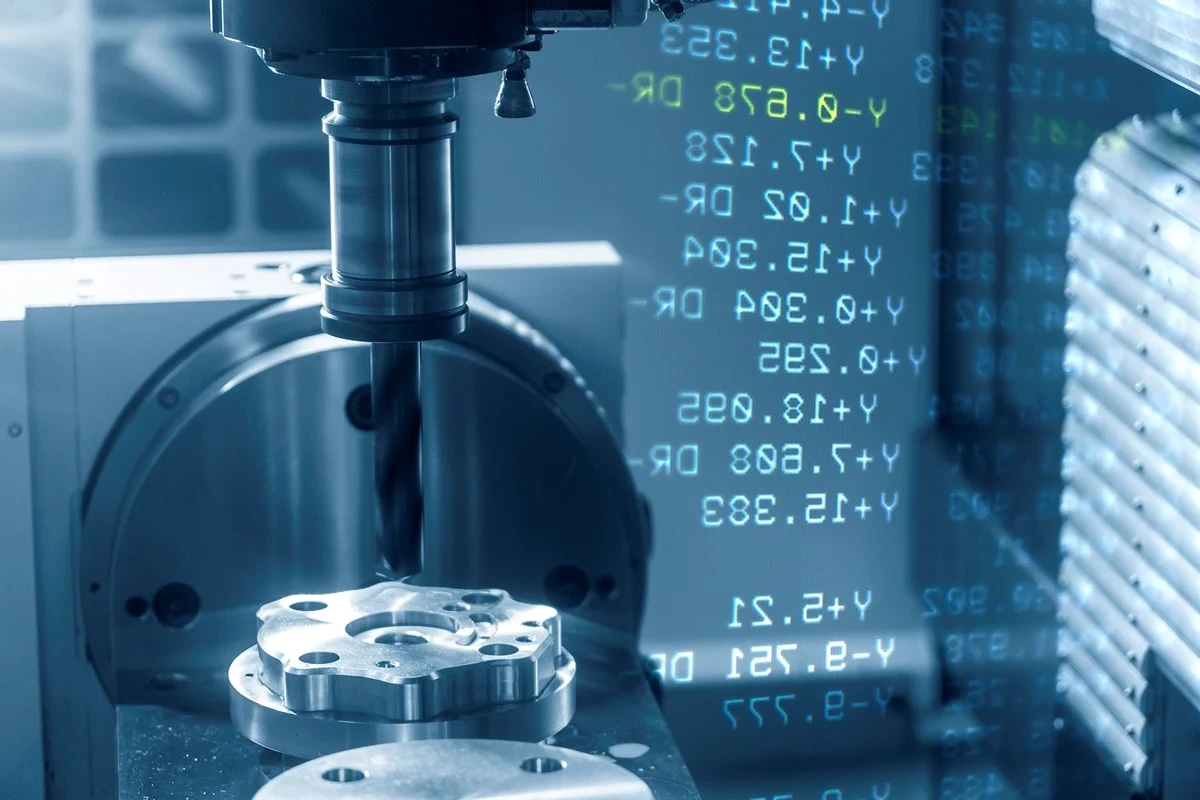Programming for CNC and Robotics
The Multi-Language Manufacturing Stack
Manufacturing programming isn't a single language or paradigm. It's an ecosystem where G-code controls machine motion, Python handles data processing and automation, ladder logic programs PLCs for factory control, and high-level languages like C++ power real-time robotic control systems. Successful manufacturing engineers develop polyglot skills across this technological landscape.
G-code: The Foundation of CNC
G-code (Geometric Code) serves as the low-level instruction set for CNC machines. While CAM software typically generates G-code automatically, understanding its structure enables debugging, optimization, and advanced techniques like macro programming.
Core G-code Concepts:
- Modal vs. non-modal commands
- Absolute (G90) vs. incremental (G91) positioning
- Coordinate system selection (G54-G59)
- Canned cycles for repetitive operations
- Parametic programming with variables
Advanced G-code programming includes macro capabilities that enable conditional logic, loops, and calculations directly within the machine control — powerful for creating flexible, adaptive machining programs.

Python for Manufacturing
Python has become the lingua franca of manufacturing automation. Its extensive libraries for data processing, machine learning, and hardware control make it ideal for tasks ranging from quality inspection using computer vision to predictive maintenance analytics. Libraries like NumPy and Pandas handle sensor data analysis, while OpenCV enables vision-guided robotics.
Robot Programming Languages
Industrial robots use manufacturer-specific languages like RAPID (ABB), KRL (KUKA), or KAREL (FANUC). These languages handle motion planning, force control, and coordination with external systems. Modern approaches increasingly use ROS (Robot Operating System) for more flexible, portable robotic software development.
PLC Programming and Factory Automation
Programmable Logic Controllers (PLCs) form the nervous system of modern factories. These ruggedized industrial computers control equipment, coordinate processes, and ensure safety across manufacturing environments. PLC programming uses specialized languages defined by the IEC 61131-3 standard.
Ladder Logic
Visual programming language resembling electrical relay circuits. Most intuitive for electricians transitioning to automation programming.
Function Block Diagram
Graphical representation of data flow between functional blocks. Excellent for complex control algorithms and signal processing.
Structured Text
High-level text-based language similar to Pascal. Most powerful for implementing algorithms and mathematical operations.
Modern PLC systems integrate with enterprise software through industrial protocols like OPC UA, enabling real-time data exchange between factory floor equipment and business systems. This integration supports Industry 4.0 initiatives, connecting physical production with digital optimization.